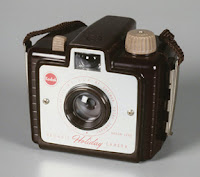Telltale Tips: The Most Important yet Most Ignored Factor in Selling Art Prints
If you are reading this blog you're probably already selling prints of your art or are considering selling prints. Either way, hopefully you have done a little research on making prints or have found someone to make prints for you. In my 10 years of printing experience, I have discovered one factor that is overlooked time and time again by both amateur and "professional" art printers. This factor can greatly reduce the quality of your digital file, and ultimately affect your sales. I'm talking about image clarity.
I know I know, that's a no-brainer right? If you make prints, of course you want them to be clear. The problem is, due to our over-exposure to mediocre photo prints, we have been trained to accept blurry images as OK. In my opinion it all started when Kodak came out with the Brownie camera. Before the Brownie, photography was mostly limited to professionals who used 8x10 and 4x5 view cameras. These cameras were very well built and the quality rendered was usually quite good due to the quality of the lenses used. By the time cameras were cheap enough for families to buy via mass production the size of the film was reduced to medium format while lenses were manufactured smaller with diminished quality. Because of this the prints made from these cameras were substantially more blurry. But for the price, we accepted it and it became the norm. In the years to come, consumer photo quality only got worse. Fast forward a few decades and digital cameras are repeating history, only backwards. We started out with very low quality digital files in the 1990's, (under 1mb). Although the camera file sizes increased over time, the quality of the digital camera lenses has more than likely varied from horrible to lackluster. Again, bad lens quality translates into low quality prints.
 |
| 1950's Brownie camera with plastic lens. |
So there it is! In a nutshell, our need for cheap, quick turn around has lowered our standards for print quality in the photographic realm. The problem is, this mentality has made its way into the fine art market, as well as other print markets. Today, many artists and print houses believe they can create good prints using digital cameras or scanners that use low quality lenses to render the digital file used for printing. Don't fall for it my friends! As many of you have found, the scanner we use at Archival Arts plays a major role in the quality of your prints. It uses the highest quality lens available as well as super high resolution. Look at the comparison below and judge for yourself.
Notice the clarity of the pencil lines and the background around the hat. In addition pay attention the common yellowish cast and lack of detail in the darker areas of the digital camera image. Keep in mind both of these images are 3"x 3" at 72 dpi for this example. The dpi count of the file has no influence on the quality of the image. It is the lens that determines the clarity. If you are spending a few hundred dollars on an art print, what kind of quality would you want?



Comments
Post a Comment